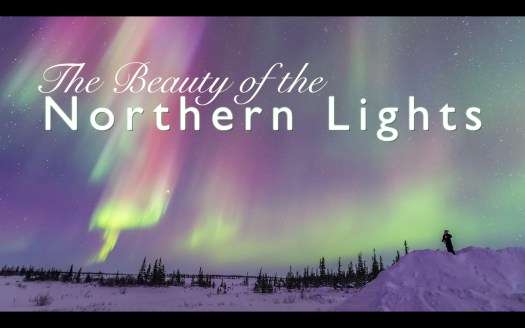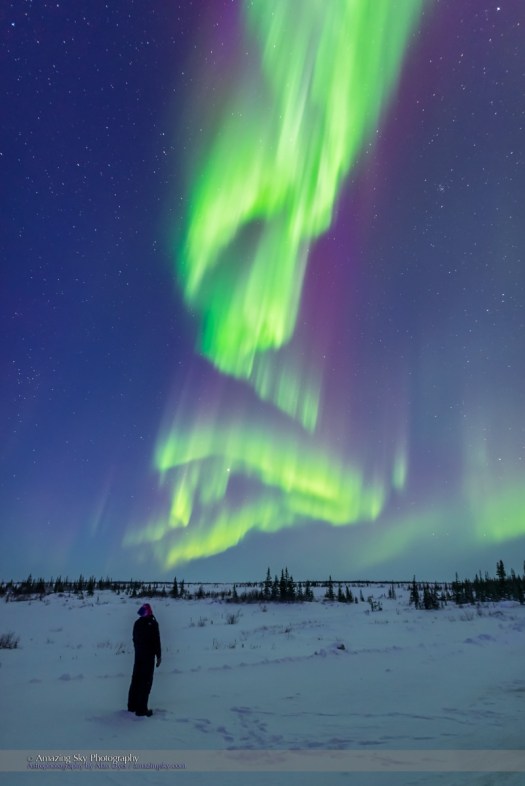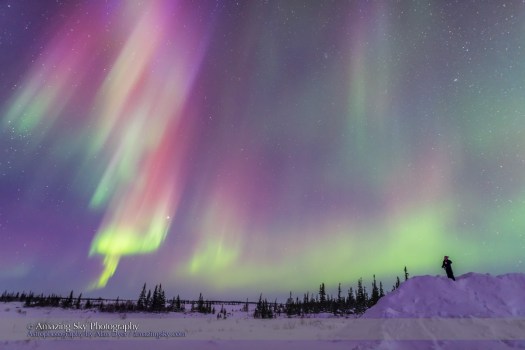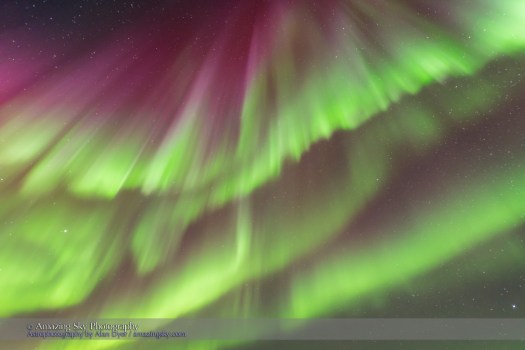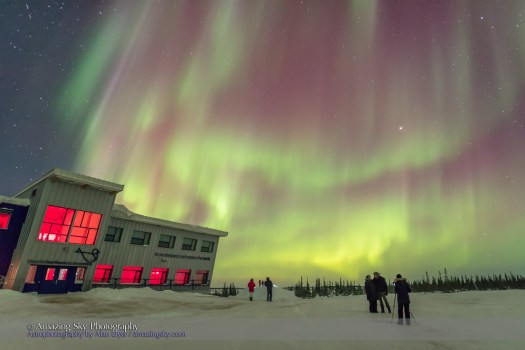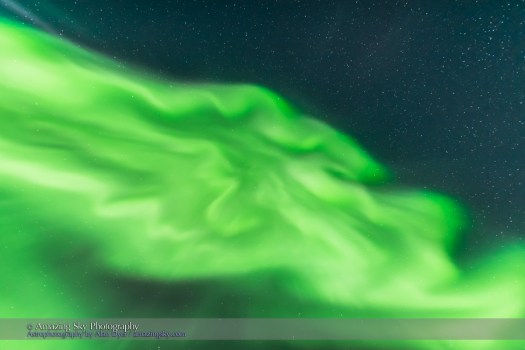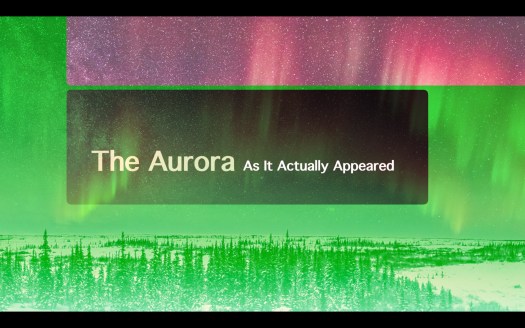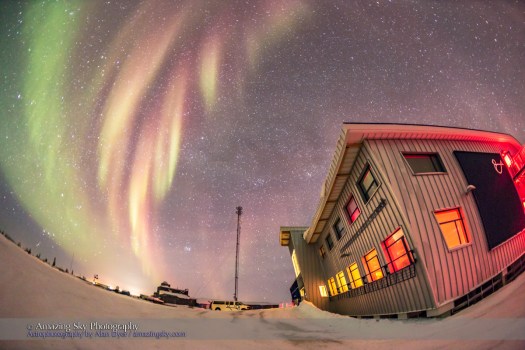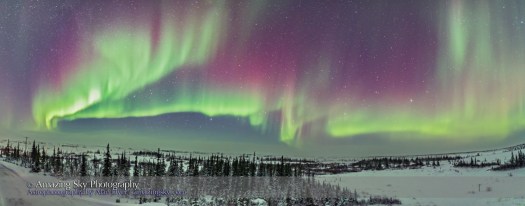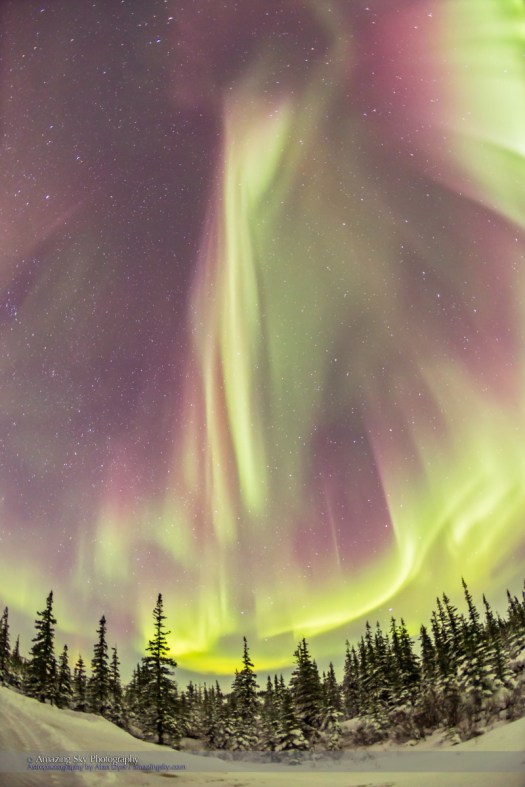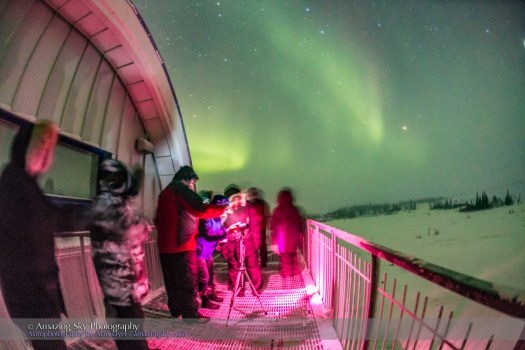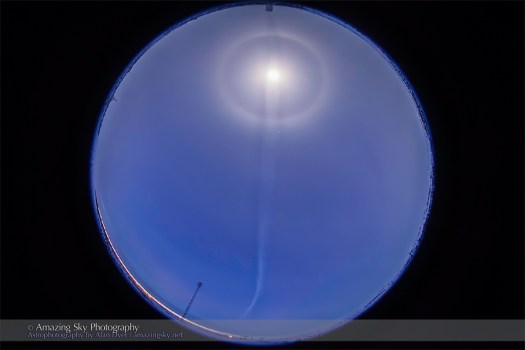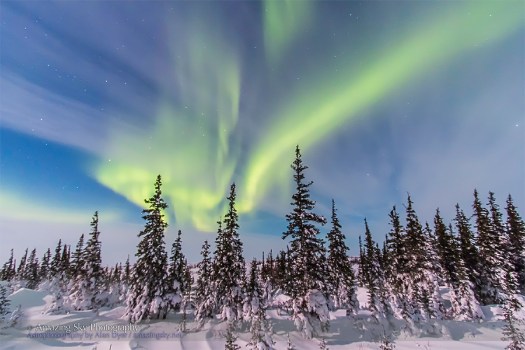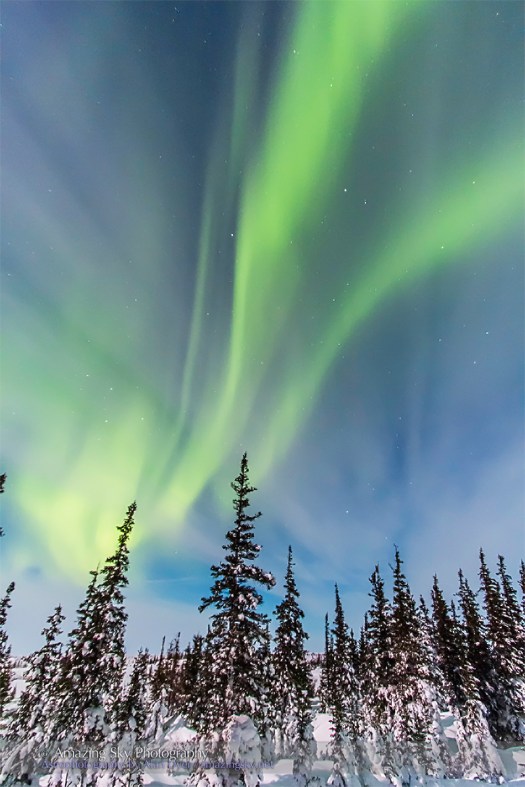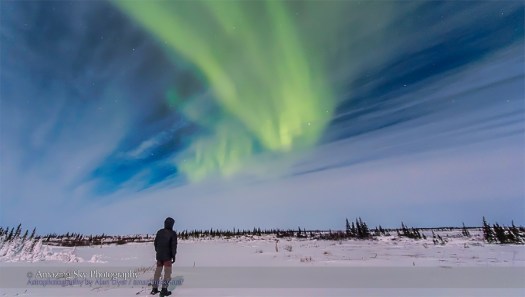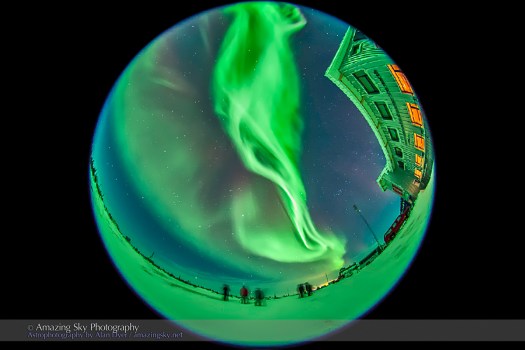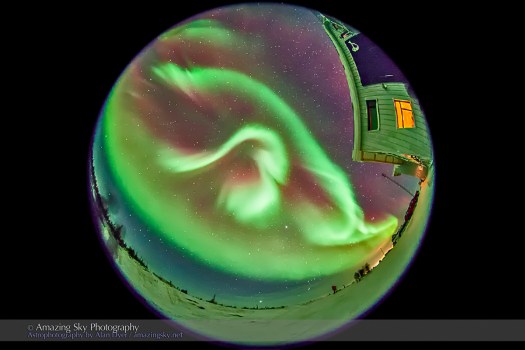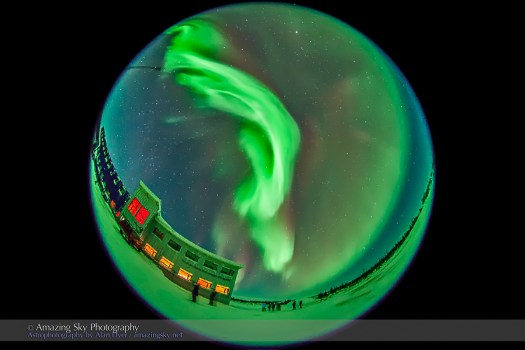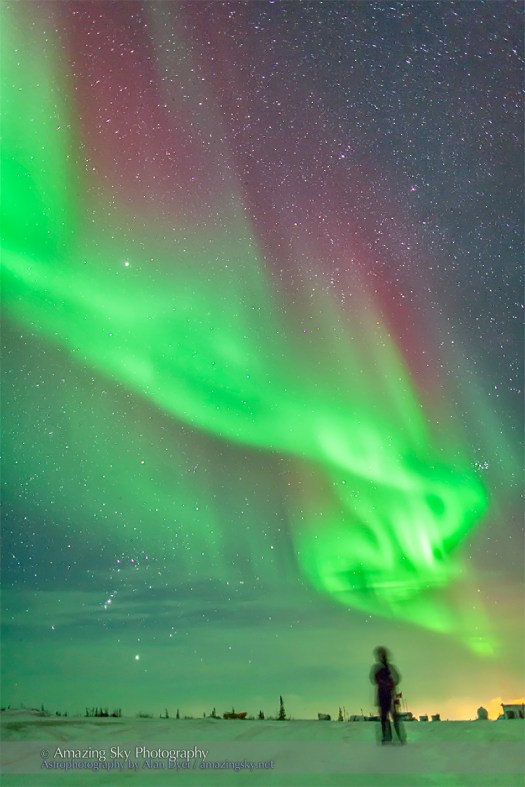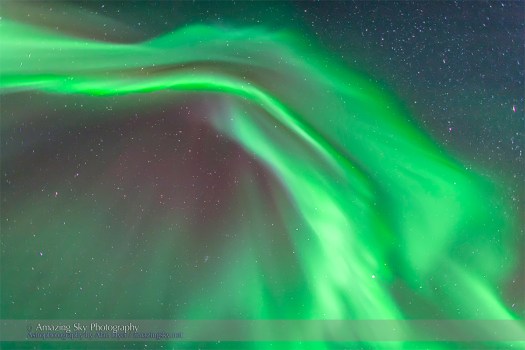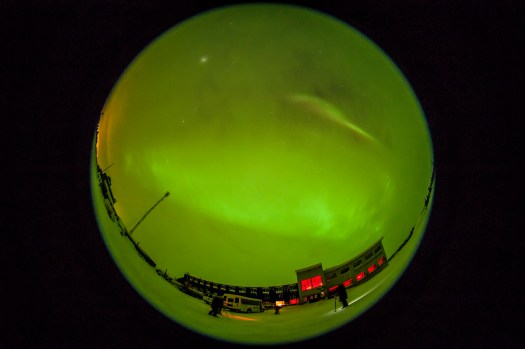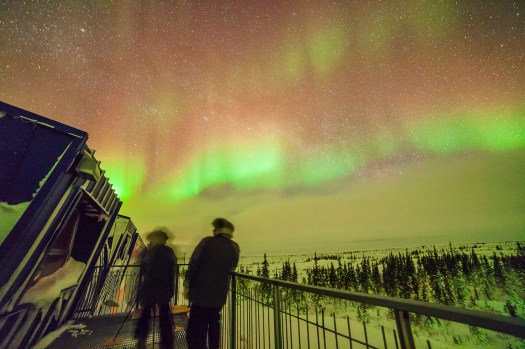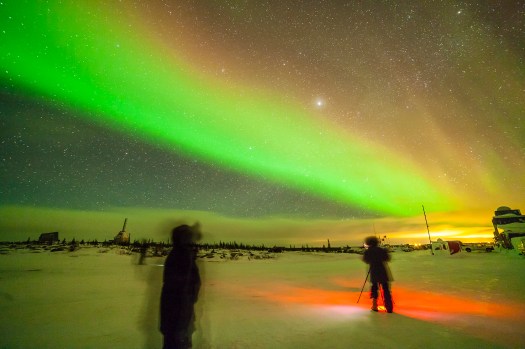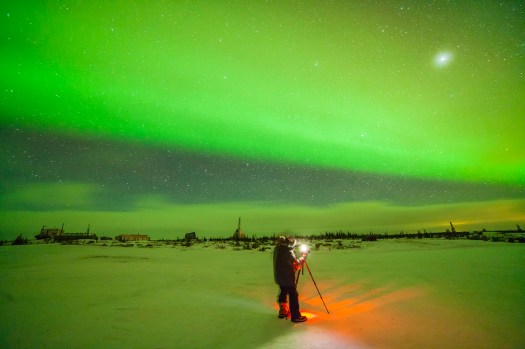
For 11 non-stop nights in February we had clear skies and Northern Lights in Churchill.
Every year in winter I visit Churchill, Manitoba to attend to groups of aurora tourists at the Churchill Northern Studies Centre. Few groups (indeed only two over the 35 years the program has been offered) go away having not seen the Lights during the 5-night program.
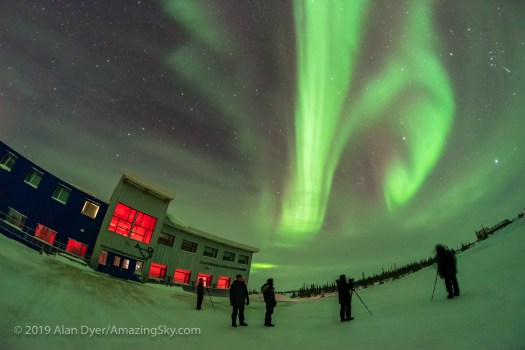
But this year was the opposite exception. Even locals were impressed by the run of clear nights and displays in early February. It was non-stop Northern Lights!

Having auroras in Churchill isn’t unusual. It is located right under the auroral oval, so if it’s clear it would be unusual not to have some level of auroral activity.
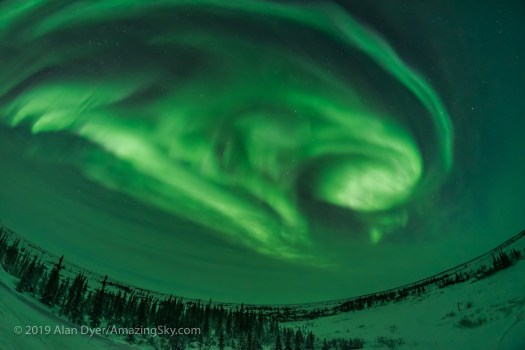
But particles from a coronal hole at the Sun fired up the lights and gave us good shows every night, often starting early in evening, rather than at midnight as is typically the case. The shows pre-empted my evening lectures!
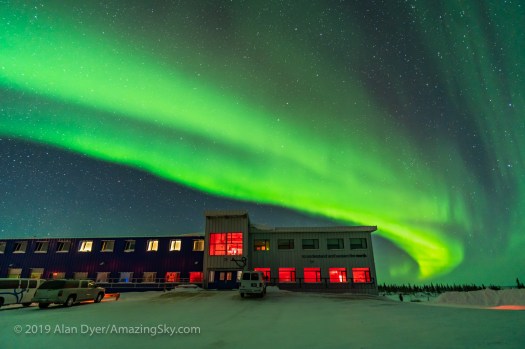
With shows every night, people soon got pretty fussy about what they’d get excited about. Some nights people viewed displays just from their bedroom windows!

Displays that on night one they would be thrilled with, by night four they were going back to bed awaiting a call later when “it gets really good!”

While auroras were active every night, the Lights showed little in the way of varied colours. Notably absent was any of the deep red from high altitude oxygen. The aurora particles were just not energetic enough I presume, a characteristic of solar minimum displays.

Increasingly, as we enter into the depths of solar minimum, with a prolonged lull expected for the next few years, aurora chasers will have to travel north to the Arctic and to the auroral oval to see displays on demand. The Lights won’t come to us!
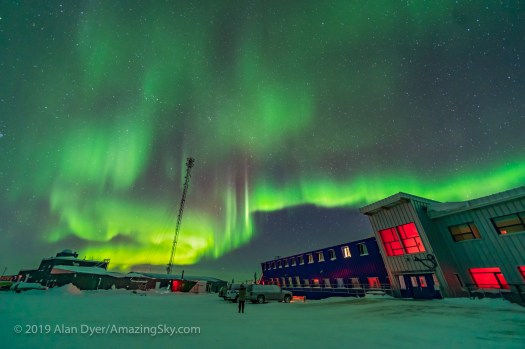
We did see fringes of pink at times along the bottom of the auroral curtains from glowing nitrogen molecules, but even this was subtle to the eye, though obvious to the camera.
The nitrogen pinks are usually accompanied by rapid dancing motions that are amazing to watch.
The music video linked to below provides the best view of what we saw. It is made entirely of real-time video, not time-lapses, of the Lights as seen over several nights from the Studies Centre.
The video is in 4K, so do click through for the best viewing. And the Vimeo page provides more details about the video and the techniques.
Enjoy!
The Sky is Dancing from Alan Dyer on Vimeo.If you are interested in attending one of the CNSC’s sessions — where you eat, sleep, learn, and view the Lights from a well-appointed and comfortable research centre at a dark site, check out the Study Centre’s “Learning Vacations” offerings.
The next sessions for the aurora are a year from now in February and March 2020. I’ll be there!
— Alan, February 21, 2019 / © 2019 Alan Dyer / AmazingSky.com








